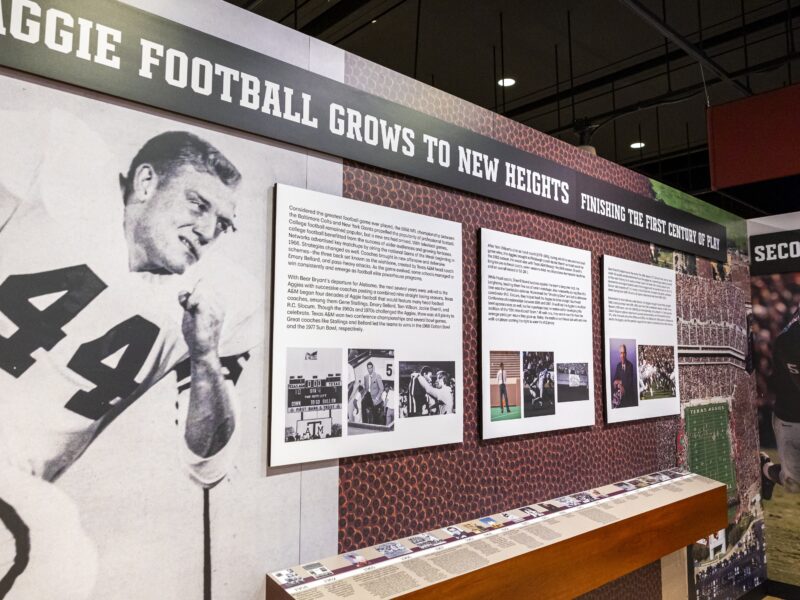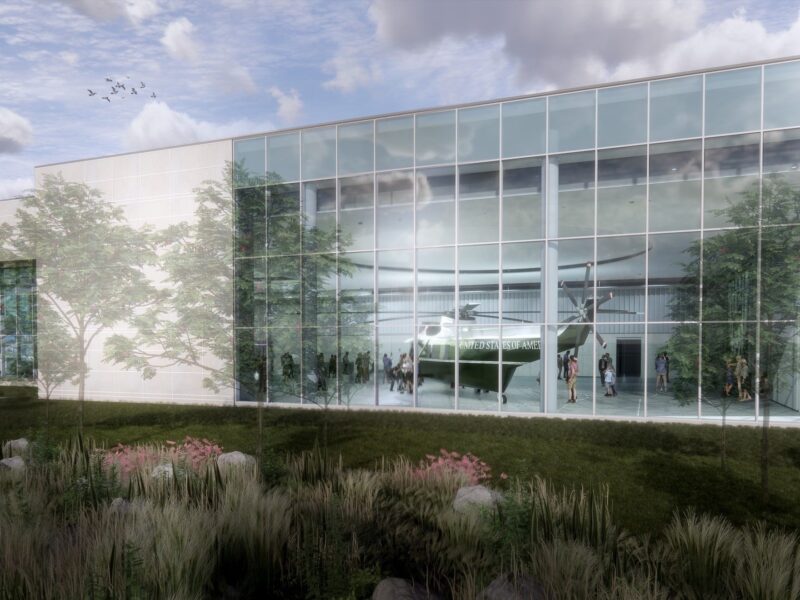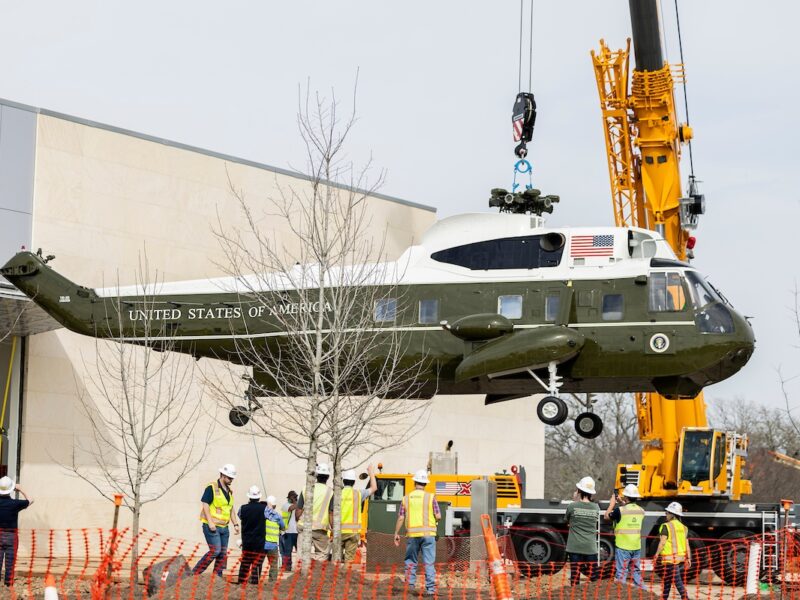Bush Library Director Retires After 30 Years
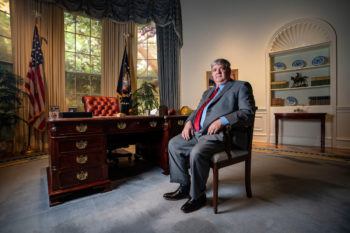
Warren Finch has rubbed shoulders with enough boldfaced names that to ask him to name a favorite memory from his career – which includes all 25 years the George H.W. Bush Presidential Library and Museum has been open – is to risk understating the number of significant historical figures he’s met on the job.
Of course, there are the many times he spoke with President Bush and his wife, former first lady Barbara Bush. If you ask Finch’s kids, they were most impressed when he gave a tour to Darth Vader – the actor James Earl Jones. But it’s the “random, Forrest Gump-y” moments that Finch said he’ll probably look back on most fondly upon his retirement Friday as the library’s director.
For instance, the day former British Prime Minister John Major was in College Station to deliver a speech, Finch’s office served as a makeshift green room when Major asked for a place to prepare. For about half an hour, Finch chatted with Major about British history, which was his expertise as a history master’s student at Auburn University.
“For a kid from Mobile, Alabama,” Finch said, “it doesn’t get much better than that.”
Finch has been director of the library and museum since 2004, and before that held roles as deputy director and an archivist. He’s been with the library since the beginning – from the last days of the Bush administration in 1993, when Finch was assigned to move 11,000 boxes of presidential records to College Station, where they would be stored in a temporary facility until the museum opened in 1997.
As director, Finch has managed both the archives side of the museum – part of its mission is to preserve the 41st president’s records and artifacts, and make them available to researchers and the public – as well as its many educational programs and exhibits that tell the story of Bush’s life and legacy.
“What’s been nice for me is hearing the tourists leave, and not knowing who I am, say, ‘That was a great place,’” Finch said. “It’s very satisfying.”
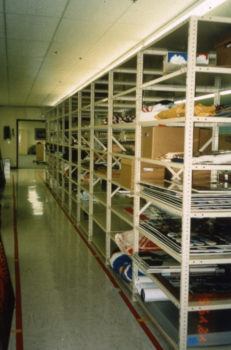
From Washington, D.C. To College Station
Sitting in a reproduction of the Oval Office earlier this week before the museum opened to the public, Finch reflected on the last 30 years of his career, beginning when he was a National Archives employee in Washington, D.C. Shortly after Bush lost his bid for a second term in 1992, Finch was tapped to join the team of archivists that would collect the president’s records.
Finch and the team – which included his wife, Mary – made their way through the White House and Executive Office Building taking inventory of the records, boxing them up and putting them on pallets. The records were to be transferred to College Station, where Bush’s presidential library and museum was to be built on the Texas A&M University campus.
“I was asked if I’d like to be part of the team that came to College Station when the records arrived, and I said yes,” Finch said. “They needed someone to get the building ready to receive the records. So even before the administration ended, I came here.”
Pallets of roughly 43 million pages of records were shipped to Andrews Air Force Base, where they were loaded onto C-5A cargo planes and flown to Fort Hood. Once they were transferred to College Station, soldiers unloaded the hundreds of boxes onto shelving that Finch had prepared at a temporary facility.
At the building – a former bowling alley and Chinese restaurant on University Drive – Finch and a handful of other archivists got to work checking inventories and preparing the records for release. They would be subject to the Freedom of Information Act in five years, Finch said, so the team had to work quickly to make sure they would be available to researchers and the public.
The George H.W. Bush Presidential Library and Museum was dedicated in November 1997. The day of the opening was “beautiful,” Finch remembers. All of the living presidents were present, with the exception of Ronald Regan, who was battling Alzheimer’s. He was represented by his wife, Nancy Reagan, who was among the first ladies in attendance.
“We had more celebrities than I can tell you,” Finch said. “For us, being here in College Station since 1993, it was a culmination of everything we were working toward.”
Relationship With Bush
Shortly after Bush left office, Finch met the former president for the first time when he came by the museum to greet the staff. He began to work with the Bushes more closely once he was promoted to deputy director.
“I was very, very lucky,” Finch said. “For most of the 18 years that I’ve been director, they were here constantly in the museum.”
Bush also frequently invited famous guests to the library – former British Prime Minister Tony Blair, former Chancellor of Germany Helmut Kohl and former President of the Soviet Union Mikhail Gorbachev, to name a few.
“For someone with a history degree, it was perfect, because I got to witness real history,” Finch said.
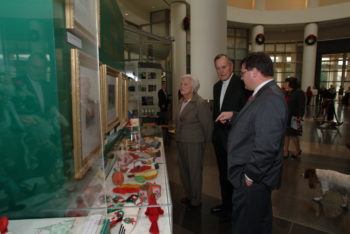
While their presence was always felt, the former president and his wife were generally hands-off when it came to the day-to-day running of the library and museum, Finch said. They never interfered with the staff’s plans, he said, and Bush was always helpful in making records open to the public.
“They were what you saw. He was kind, genuine, always writing people letters, and she was also very kind and very interested in what we were doing,” Finch said.
Finch received several of Bush’s famous letters. When he was named director, Bush wrote to Finch to tell him he was the right person for the job.
Leaving The Library
The job in College Station was originally meant to be a brief stint before heading back to Washington, D.C. and a career at the National Archives. But Finch and his wife fell in love with College Station, where they put down roots and raised their children.
They’ve been witness to massive growth since their arrival. When the museum first opened, Finch remembers, it was “way out” on West Campus. Nearby FM 2818 didn’t have traffic lights. But as the university and city grew, so did the library’s integration with Texas A&M and the wider community.
The museum also saw a massive uptick in attention after the president and former first lady’s deaths in 2018. Both were laid to rest alongside their daughter, Robin, in the family plot on the grounds of the library.
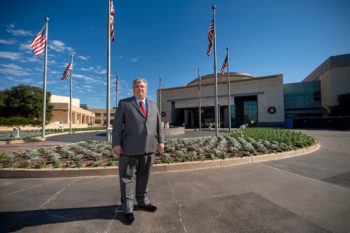
The renewed interest in their legacy has brought visitors from around the world to the museum to learn about a history that many people don’t know, Finch said.
One of Finch’s favorite exhibits features a 12-foot tall section of the Berlin Wall, which fell during the Bush administration. In another area stands a red and turquoise pagoda, where visitors can learn about the Bushes’ time in China while the former president served as chief of the U.S. Liaison Office – Finch said a highlight is a diary Bush kept during this period.
“People come in and see a part of the Bush history, and learn about a life of service,” Finch said. “They learn what a life well-lived is about, and how our political system works. And researchers are using our documents to write about that very pivotal part of American history.”
When describing the library’s value, Finch quotes a phrase inscribed on the National Archives Building in Washington, D.C.: “What is past is prologue.”
“We learn from the past,” he said, “because the past is the future.”
The future for Finch, he hopes, holds more time for traveling. He’ll miss the job, but will miss the people he’s worked with most of all.
“I’ve always been most proud of hiring people who were maybe a little bit smarter than me,” Finch said. “I’m very proud of the staff and how dedicated they are to the mission. I guess my legacy is that I’m leaving the building in great hands.”
His wife, Mary, will stay on at the library, where she works as an audiovisual archivist. And even in retirement, Finch will still be a familiar face on the grounds – he plans to volunteer as a docent once a week.
“The volunteer crew has already told me that I shouldn’t act like I know everything, that I’ve got a lot to learn,” Finch said. “So I’m going to come back and do a lot of volunteering.”
Video by Emily Sartin, Texas A&M University Division of Marketing & Communications
Media contact: Caitlin Clark, caitlinclark@tamu.edu
